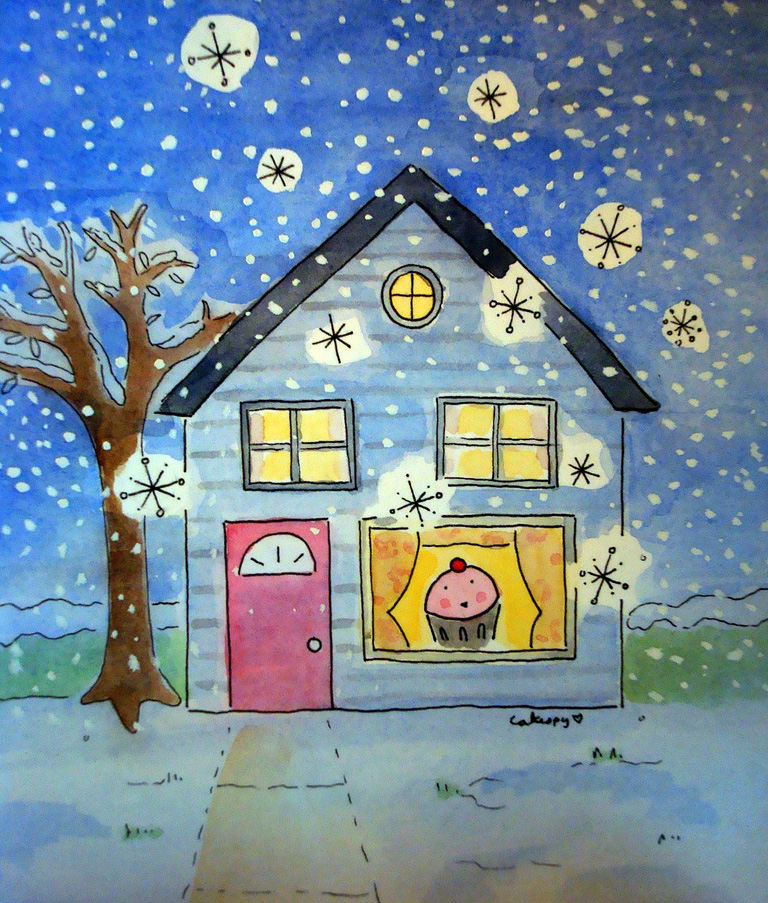
Photos and illustrations via CakeSpy
Masking fluid can help you create a natural, dimensional snowy sky in watercolor form. Masking fluid is a viscous, translucent medium that can be applied to “mask” certain areas you don’t want to cover with paint. It goes on wet, but dries to a slightly gummy consistency. The covered area will remain safe from the wet paint, even when it is applied directly above the masking fluid-coated areas. Once the paint is dry, the masking fluid can be rubbed off and the area it had covered remains untouched.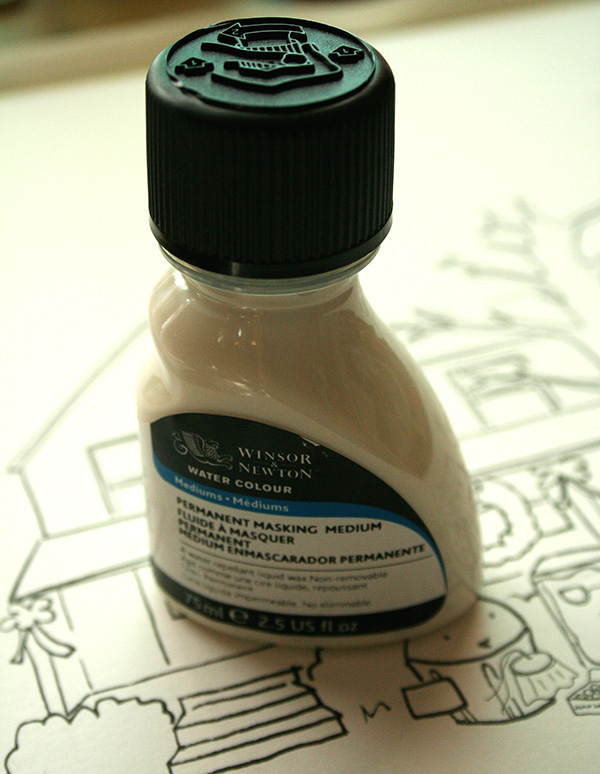 By using masking fluid to create your snow patterns before you paint, you not only have more control over your final composition from the get-go, but you also save yourself the time of painting the snow. Simply rub away the masking fluid, and you magically have snow!
To illustrate with an example, say you have a pen and ink drawing that you want to paint, but you want it to look as if snow is falling. How should you apply the masking fluid?
By using masking fluid to create your snow patterns before you paint, you not only have more control over your final composition from the get-go, but you also save yourself the time of painting the snow. Simply rub away the masking fluid, and you magically have snow!
To illustrate with an example, say you have a pen and ink drawing that you want to paint, but you want it to look as if snow is falling. How should you apply the masking fluid?
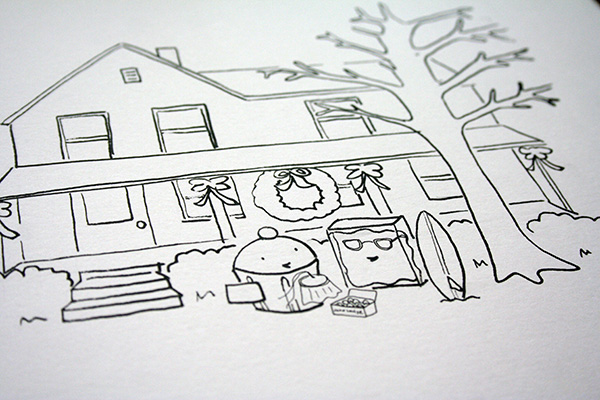 Let’s discuss some easy ways to use masking fluid to create snow.
Let’s discuss some easy ways to use masking fluid to create snow.
Hand-painted method
Simply use your brush to paint dots of masking fluid to represent snow falling.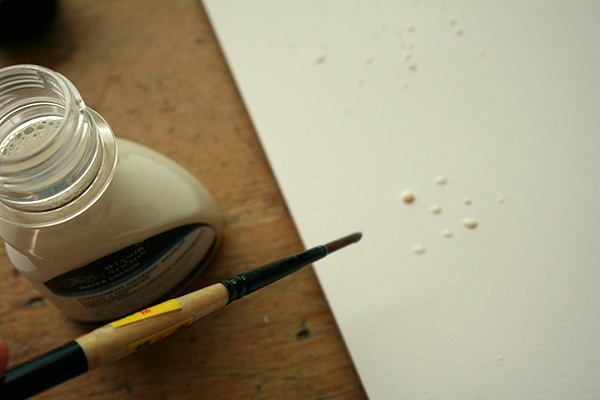
Advantages:
It’s easy, and you have control over the brush.Disadvantages:
It looks somewhat polka-dot like.Tapping method
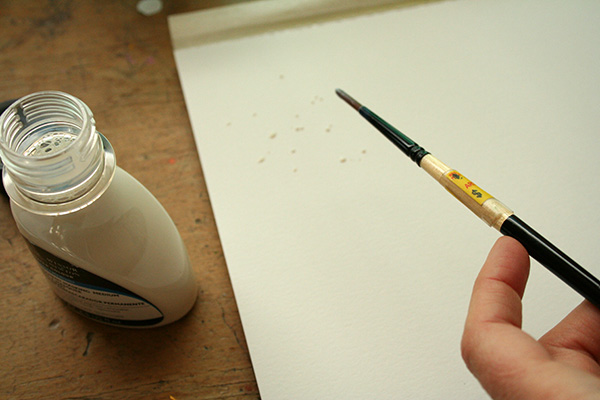 Load the brush up with masking fluid, and hold it in one hand. With the finger or first two fingers of the other hand, gently tap the portion of the brush closest to the bristles. This will cause the masking fluid to fall off in a controlled, yet slightly irregular, way.
Load the brush up with masking fluid, and hold it in one hand. With the finger or first two fingers of the other hand, gently tap the portion of the brush closest to the bristles. This will cause the masking fluid to fall off in a controlled, yet slightly irregular, way.
Advantages:
A slightly more natural and irregular look.Disadvantages:
You have less control over where the masking fluid will fall.Toothbrush method
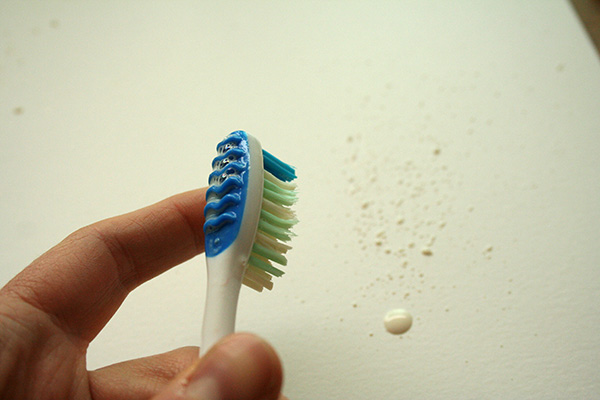 Dip the bristles of a toothbrush you’ll never be using on teeth again in your masking fluid. Using your finger, gently flick the bristles so that they gently spatter masking fluid on the page.
Dip the bristles of a toothbrush you’ll never be using on teeth again in your masking fluid. Using your finger, gently flick the bristles so that they gently spatter masking fluid on the page.
Advantages:
Very rapid application of a unique, irregular look.Disadvantages:
You have little control over how the masking fluid will land, and it can get messy.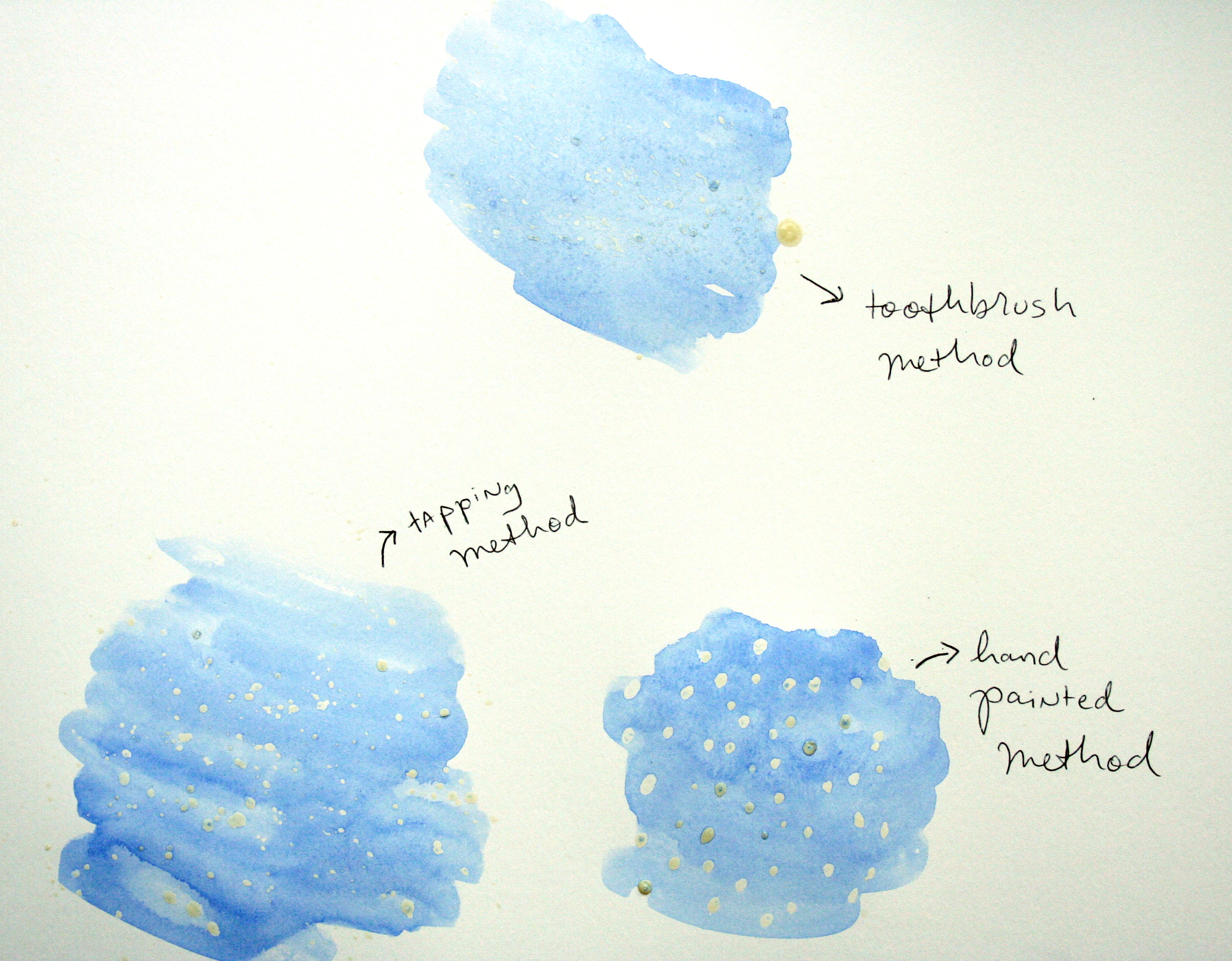 While there is no right or wrong choice, in viewing the options, even before the masking fluid is rubbed off, it’s evident that the tapping method will give the gentlest, most natural look — the hand painted method looks too formulaic, and the toothbrush method would make it look like a blizzard.
From here on out, it’s easy: simply apply the masking fluid in your desired style to the surface, then watercolor as usual. When finished painting, rub off the masking fluid and enjoy your wintery watercolor masterpiece. If you find yourself wanting more snow, you can accent the masked snowflakes with additional acrylic ones painted in opaque white on top of your dried watercolor piece.
While there is no right or wrong choice, in viewing the options, even before the masking fluid is rubbed off, it’s evident that the tapping method will give the gentlest, most natural look — the hand painted method looks too formulaic, and the toothbrush method would make it look like a blizzard.
From here on out, it’s easy: simply apply the masking fluid in your desired style to the surface, then watercolor as usual. When finished painting, rub off the masking fluid and enjoy your wintery watercolor masterpiece. If you find yourself wanting more snow, you can accent the masked snowflakes with additional acrylic ones painted in opaque white on top of your dried watercolor piece.



Share tips, start a discussion or ask one of our experts or other students a question.
No Responses to “Winter Wonderland: How to Paint Snow in Watercolor”